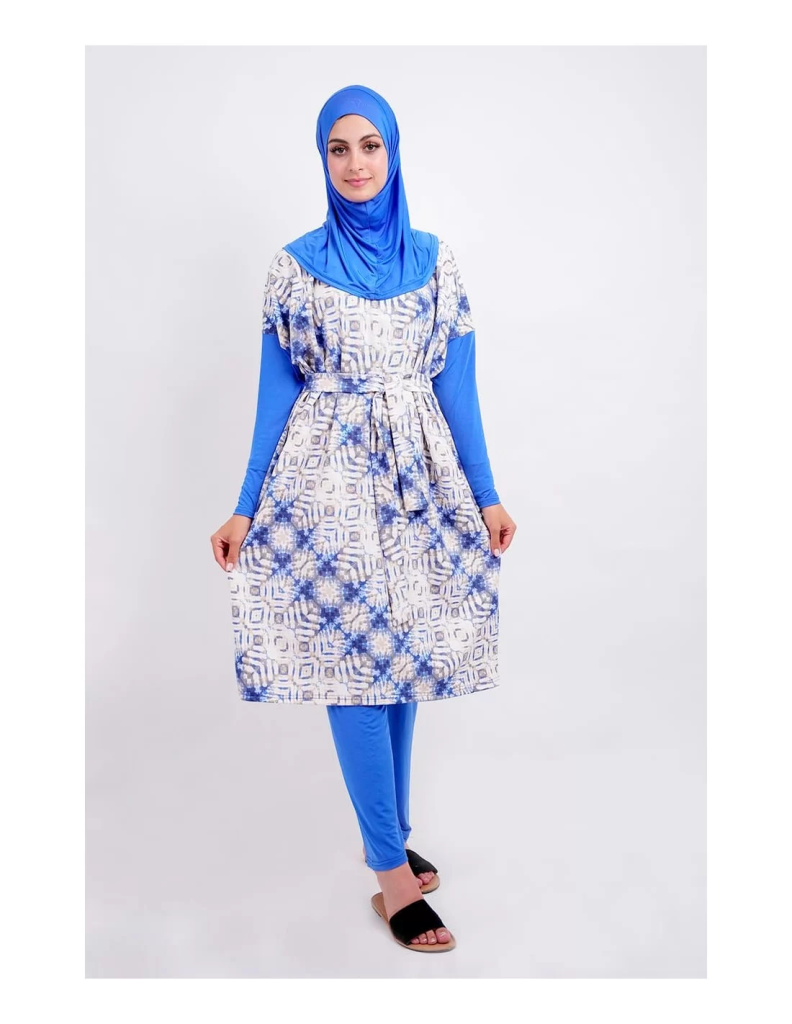
The burkini is a type of swimwear designed for Muslim women, which covers the whole body, except for the face, hands, and feet. The garment has been the subject of controversy in recent years, with some arguing that it is a symbol of oppression and others arguing that it is a symbol of empowerment. The burkini has undergone significant evolution since its inception, from concept to reality.
In 2004, Australian-Lebanese woman Aheda Zanetti created the first burkini, in response to her niece being disqualified from a swimming competition for wearing a hijab. Zanetti recognized that there was a need for a swimsuit that covered the whole body, but was also comfortable and practical for swimming.
The early versions of the burkini were relatively simple, with a full-body suit made from a stretchy and lightweight fabric. The first burkinis were designed to adhere to Islamic dress codes, while also being practical for swimming. The fabric was water-resistant and quick-drying, which made it ideal for use in the water. The early burkinis were also designed to be easy to wear, with no zippers or buttons that could get stuck in the water.
As the burkini gained popularity, designers began to experiment with different styles and materials. The burkini began to incorporate more fashion-forward designs and colours, which allowed women to express their individuality. The early versions of the burkini were mostly black or navy, but designers began to incorporate bright colours and patterns to appeal to a wider audience.
One of the biggest changes to the burkini was the design of the head covering. Early versions of the burkini had a hood that covered the head, which could be uncomfortable and impractical for swimming. Designers began to experiment with different styles of head-covering, including the hijab-style headscarf, which allowed women to cover their hair, while still being comfortable and practical for swimming.
As the burkini became more popular, it also became more controversial. Some argued that the burkini was a symbol of oppression, while others argued that it was a symbol of empowerment. The controversy reached a boiling point in 2016 when several French towns banned the burkini, citing concerns about public order and hygiene.
Despite the controversy, the burkini has continued to evolve. Designers have continued to experiment with different styles and materials, and the burkini has become more popular than ever. Today, there are many different styles of burkini available, from simple full-body suits to more fashion-forward designs.
One of the most significant changes to the burkini has been the inclusion of plus-size options. In the past, it was difficult for plus-size women to find burkinis that fit properly, but today there are many different options available. The inclusion of plus-size options has made the burkini more accessible to a wider audience, and has helped to promote body positivity.
Another significant change to the burkini has been the inclusion of sun protection. Many burkinis now come with built-in SPF, which helps to protect the skin from harmful UV rays. This feature has made the burkini a popular choice for women who want to be active outdoors, without compromising their modesty or their health.
In conclusion, the burkini has undergone significant evolution since its inception. From a simple full-body suit designed to adhere to Islamic dress codes, the burkini has become a popular choice for Muslim women who want to participate in activities like swimming and water sports. The burkini has also become a symbol of empowerment for many Muslim women, who see it as a way to express their religious beliefs and challenge societal norms. Despite the controversy that surrounds it, the burkini continues to evolve, with designers experimenting with different styles and materials to make it more accessible and practical for women of all shapes and sizes.

